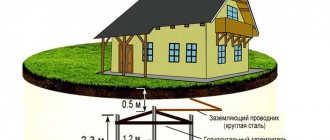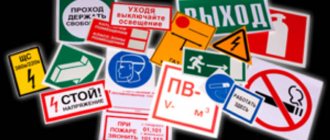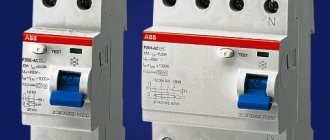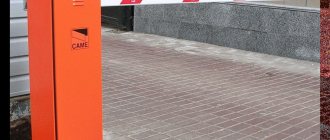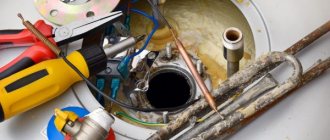High-voltage power lines are dangerous objects, and you must work near them with caution and in compliance with safety standards. Crane work near power lines is carried out only if the distance to power lines is not less than 30 m. Otherwise, approvals are required.
A reminder for the crane driver on the rules of working near power lines
Rules for operating a crane near power lines
When the crane is working near power lines closer than 30 meters, the operator needs to obtain a work permit, which will determine safe working conditions. The distance is calculated in this way.
The calculation takes into account the distance from the retractable part of the crane in any position, from the load suspended on the boom, to the vertical plane, which is formed from the projection drawn from the cable at right angles to the ground.
The overhead power line must carry at least 42 volts.
Orders from crane owners and contractors establish the procedure for organizing production near power lines, issuing instructions to workers and work permits.
When drawing up a work permit, the safety standards and rules prescribed in GOST 12.1.013-78, which was reissued in April 2001, are taken into account.
The organization issuing the order determines the duration of the action. The crane operator receives the permit immediately before work. The contractor, that is, the crane operator, is prohibited from arbitrarily choosing the location for installing the crane next to the power line and carrying out the installation itself.
This moment is marked with an entry in the waybill. If physical movement of the crane from one place to another is required, a new permit is drawn up and issued.
Work permit for crane operation near power lines - permitting documents, form
The work process must be under the direct personal supervision of the person responsible for the safety of crane work.
The person indicates to the crane operator the exact location where the crane should be installed and ensures that the working conditions specified in the issued permit are met. Then an entry is made in the crane operator’s logbook indicating that the permit has been issued.
The load should also not reach power lines - a distance of 30 meters or more
If work is carried out in the security zone of power transmission lines, within the boundaries of the breaks established by the “Rules for the Protection of High-Voltage Electric Networks,” a work permit cannot be issued without the approval of the organization operating the power lines.
Security zones near power lines
Power transmission line security zones include areas of land and space located between the planes located on the sides of the vertical projections of the outer wires onto the ground - everything is graphically drawn on the diagram above.
The higher the network voltage, the larger the indents will be:
- Up to 1 kV – 2 meters.
- From 1 to 20 kV – 10 meters.
- 35kV – 15 meters.
- 110 kV – 20 meters.
- From 150 to 220 kV – 25 meters.
- From 330 to 500 kV – 30 meters.
- 750 kV – 40 meters.
- 1150 kV – 50 meters.
In this case, the distance from the outer wires to the crane and the carried load will be:
- Up to 1 kV – 1.5 meters.
- From 1 to 20 kV – 2 meters.
- Up to 110 kV – 4 meters.
- From 110 to 220 kV – 5 meters.
- 330 kV – 6 meters.
- Up to 800 kV – 9 meters.
Attention! Do not confuse these distances with the size of security zones. They do not apply to them.
Read about the norms for the distance between power transmission line supports in our article.
When crane operators are on the staff of an energy enterprise, and the work is performed by personnel who operate electrical installations, then permission to operate self-propelled cranes near high-voltage power lines will be issued in accordance with the norms and procedures established in the industry.
Work can also be performed under unconnected electrical wires of urban transport (trolleybuses, trams). Tolerance is permitted if the distance between the contact wires and the crane boom is at least 1000 mm or 1 meter.
Carrying out work in the security zone of overhead power lines
TYPICAL TECHNOLOGICAL CARD (TTK)
WORK IN THE SECURITY ZONE OF OVERHEAD POWER LINES
1 AREA OF USE
1.1. A standard technological map (hereinafter referred to as TTK) was developed for a complex of works of construction machines in the security zone of overhead power lines.
1.2. The standard technological map is intended for use in the development of Work Performance Projects (WPP), Construction Organization Projects (COP), other organizational and technological documentation, as well as for the purpose of familiarizing workers and engineers with the rules for carrying out work in the security zone.
1.3. The purpose of creating the presented TTK is to provide a recommended flow chart for carrying out a set of works in the security zone, show the composition and content of the TTK, and examples of filling out the necessary tables.
1.4. On the basis of the TTK, as part of the PPR (as mandatory components of the Work Project), Working Technological Maps are being developed for the performance of work in protected zones.
When linking the Standard Flow Chart to a specific facility and construction conditions, production schemes, volumes of work, labor costs, mechanization tools, materials, equipment, etc. are specified.
1.5. All working technological maps are developed according to the working drawings of the project, they regulate the means of technological support and the rules for performing technological processes during the execution of work.
1.6. The regulatory framework for the development of technological maps is: SNiP, SN, SP, GESN-2001 ENiR, production standards for material consumption, local progressive standards and prices, labor cost standards, material and technical resource consumption standards.
1.7. Working flow charts are reviewed and approved as part of the PPR by the head of the General Contracting Construction and Installation Organization, in agreement with the Customer's organization, the Customer's Technical Supervision and the organizations that will be in charge of the operation of this overhead power line.
1.8. The use of TTK helps to improve the organization of production, increase labor productivity and its scientific organization, reduce costs, improve quality and reduce the duration of construction, safe performance of work, organize rhythmic work, rational use of labor resources and machines, as well as reduce the time required for the development of project planning and the unification of technological solutions.
1.9. This TTK covers the following types of work:
— passage of construction equipment under power lines;
— a section of a trench (pit) under a power line.
1.10. Work should be carried out in accordance with the requirements of the following regulatory documents:
SNiP 3.01.01-85*. Organization of construction production;
SNiP 12-03-2001. Occupational safety in construction. Part 1. General requirements;
SNiP 12-04-2002. Occupational safety in construction. Part 2. Construction production;
POT R M-016-2001. Interindustry rules of labor protection during the operation of electrical installations;
RD 102-011-89. Occupational Safety and Health. Organizational and methodological documents.
2. REQUIREMENTS FOR THE PERFORMANCE OF WORK
2.1. The admission of workers of a construction and installation organization to work in the security zone of an energized power line, as well as in the span of the intersection with an existing overhead power line, is carried out by the permitting staff of the organization operating the power line and the site manager of the construction and installation organization.
At the same time, the permitting person grants admission to the site manager of the construction and installation organization and the performers of each team of this site, with the issuance of a formalized work permit to carry out work in the security zone of the power line.
2.2. The work permit for construction and installation work in the security zone of an existing power transmission line must be signed by the chief power engineer of the construction and installation organization and the responsible representative of the operating organization of the transmission line.
2.3. Work in the security zone of an energized power line is carried out with the permission of the site manager of the construction and installation organization and under the supervision of a supervisor from the personnel of the organization operating the power line.
2.4. The passage of vehicles, lifting machines and mechanisms in the security zone of overhead power lines, as well as the installation and operation of machines and mechanisms must be carried out under the supervision of one of the employees of local power grids or a work contractor with clearance group IV, and when performing construction and installation work in the security zone Overhead lines - under the supervision of the responsible manager of local electrical networks or a work contractor with access group III.
Drivers, crane operators, machinists, slingers working in the security zone of overhead lines must have clearance group II.
2.5. In the “Separate instructions” line of the permit, an entry must be made about the appointment of the employee responsible for the safe performance of work with cranes, indicating the position, surname and initials.
2.6. The operation of construction machines in the security zone of power lines is permitted if the driver has a work permit and when the voltage is completely removed by the organization operating this power line.
2.7. The installation and operation of lifting mechanisms directly under energized overhead power lines with voltages up to 35 kV inclusive is not permitted.
2.8. If it is impossible to relieve the voltage, construction and installation work in the security zone of the power line may only be carried out:
with written permission from the operating organization;
upon preliminary issuance of permits to construction machine operators and builders by the construction and installation organization;
with the guidance and continuous supervision of a responsible person from among the engineering and technical workers with an electrical safety group of at least III, appointed by the organization conducting the work;
if drivers of construction machines have electrical safety requirements according to the approved list;
at a distance from the lifting or moving part of lifting machines and from the load being lifted in any position to the nearest power line wire according to the table of parameters of the dangerous zone (So);
when grounding lifting machines, except for crawler machines;
provided that everyone working in the security zone can provide first aid to victims of electric current.
2.9. During all work within the security zone of the overhead line without removing the voltage, mechanisms and lifting machines must be grounded. Load-lifting machines on caterpillar tracks do not need to be grounded when installed directly on the ground.
2.10. The boundaries of the security and danger zones are set on both sides of the outer wires for the corresponding voltage in accordance with GOST 12.1.051 and are indicated in Table 1 and Table 2, as well as in Fig. 1.
Fig.1. Scheme of the boundaries of security and danger zones in the area of an active overhead power line
SECURITY ZONE PARAMETERS
Table 1
| Overhead power line voltage, kV | Distance S, m |
| Up to 1 | 2,0 |
| From 1 to 20 (inclusive) | 10,0 |
| 35 | 15,0 |
| 110 | 20,0 |
| 150, 220 | 25,0 |
| 330, 400, 500 | 30,0 |
| 750 | 40,0 |
| 800 (DC) | 30,0 |
DANGER ZONE PARAMETERS
table 2
| Overhead power line voltage, kV | Distance S, m | |
| min. | max. | |
| Up to 1 | 1,5 | 1,5 |
| From 1 to 20 (inclusive) | 2,0 | 2,0 |
| Over 20-35 | 4,0 | 4,0 |
| Over 35-110 | 4,0 | 4,0 |
| Over 110-220 | 4,0 | 5,0 |
| Over 220-400 | 6,0 | 7,0 |
| Over 400-750 | 9,0 | 10,0 |
| Over 750-1150 | 10,0 | 11,0 |
2.11. When developing a trench (pit), it is allowed to operate an excavator directly under the overhead power line wires under voltage of 110 kV and higher. In this case, the conditions must be met that the distance from the lifting or sliding parts of the excavator, as well as from the soil it moves, in any position, to the nearest wire must be no less than that indicated in the table of parameters of the dangerous zone for the corresponding voltage So (see Fig. 2).
Fig.2. Operation of a single-bucket excavator directly under an overhead power line
2.12. If the above conditions are not met, the development of a trench (pit) along the power line must be done manually.
The length of the section being developed for power transmission lines is manually determined by the formula:
2.13. When driving under an energized power line, the working parts of the machines must be in the transport position (the pipe-laying crane must be with the boom lowered).
2.14. The movement of vehicles off roads, under live power line wires, should be carried out in the place where the wires sag the least (closer to the support), and the height dimensions of the mechanisms must be observed. When moving and transporting construction cargo and construction machinery on unpaved roads, the height of the upper protruding parts should not exceed 3.5 meters.
When transporting construction cargo and construction machinery on paved roads, the height of the upper protruding part should not exceed 5 meters.
2.15. Parking of cars in the security zone of power lines is permitted only with written permission from the organization operating the transmission line. It is allowed to move lifting machines within the workplace on level ground with a raised working element without a load and people on the lifting or sliding part, if such movement is permitted according to the factory instructions and it is not required to drive under undisconnected tires and overhead line wires. (see Fig. 3).
Fig.3. Driving directions for construction vehicles under an existing overhead power line
2.16. When moving construction equipment and vehicles under power lines, install poles at a distance of 10 m on both sides of the power line, hang warning tape and boards with the inscription “Caution! Power lines - high voltage.”
2.17. When moving machines under the wires of existing power lines, the vertical distance (H) between the highest point of the machine and the lowest point of sagging wire, depending on the voltage of the overhead line, must be no less than that specified in Table 3.
Table 3
| Voltage, kV | up to 35 | 35-110 | 110-220 | 220-300 | 300-500 | 500-750 | 750-1150 |
| N, m | 2,0 | 3,0 | 4,0 | 5,0 | 6,0 | 9,0 | 10,0 |
2.18. When installing a pipelayer at a work site, the work foreman, together with the permitter, must determine the required sector of boom movement. Before the start of work, this sector should be limited by poles with flags, and at night, by signal lights.
2.19. The driver operating it must install the lifting machine (mechanism) on outriggers and transfer its working part from the transport position to the working position. It is not permitted to involve other workers for this purpose.
2.20. When working in the security zone of power lines, it is mandatory to conduct targeted training with personnel.
Storage of materials and equipment in the security zone is prohibited.
3. OCCUPATIONAL SAFETY
3.1. When carrying out work in the security zone of an overhead power line, you should be guided by the current regulatory documents:
SNiP 12-03-2001. Occupational safety in construction. Part 1. General requirements;
SNiP 12-04-2002. Occupational safety in construction. Part 2. Construction production;
GOST 12.3.002-75* “Production processes. General safety requirements"
RD 102-011-89. Occupational Safety and Health. Organizational and methodological documents.
POT R M-016-2001. Interindustry rules on labor protection during the operation of electrical installations.
3.2. The boundaries of the security and danger zones are set on both sides of the outer wires for the corresponding voltage in accordance with GOST 12.1.051 and are indicated in the diagram.
3.3. People who are not directly related to the work being carried out are not allowed to stay at the work site in the security zone.
3.4. When a thunderstorm approaches, the person responsible for the safe performance of work is obliged to stop work and remove all workers from the work area to a distance of no closer than 30 meters from the power lines. During a thunderstorm, work and the presence of people in the protection zone are PROHIBITED.
3.5. If the crane boom or lifting mechanism comes into contact with live parts that are energized, the driver must take measures to quickly break the contact and remove the moving part of the mechanism from live parts at a distance of at least 4 meters, warning surrounding workers that the mechanism is under voltage. tension.
3.6. If, as a result of contact with live parts or the occurrence of an electrical discharge, the mechanism or lifting machine becomes energized, it is NOT PERMITTED to touch them and go down to the ground or climb onto them until the voltage is removed.
3.7. It is NOT ALLOWED to operate lifting machines in wind conditions that cause loads or loose cables and ropes used to lift the load to reach an unacceptable distance to live parts that are energized.
3.8. When lifting machines and mechanisms are operating, it is NOT ALLOWED for people to remain under the load being lifted, as well as in the immediate vicinity (closer than 5 m) of tensioned wires (cables), stops, fasteners and operating mechanisms.
3.9. When driving, installing and operating vehicles, lifting machines and mechanisms, the distance from lifting and sliding parts, slings, load-handling devices, loads to live parts that are energized must be at least 4 m.
3.10. Installation and operation of pipe-laying cranes at a distance of less than 30 m from the outermost wire of a power transmission line or overhead electrical network with a voltage of more than 42 V is carried out only in accordance with a permit that defines safe working conditions. The procedure for organizing work near a power line, issuing a permit and instructions is established by an order for the organization carrying out the loading work and the work manufacturer.
The permit must be issued to the crane operator (driver) of the pipe-laying crane before starting work. The crane operator (driver) is prohibited from unauthorized installation of a pipe-laying crane to work near a power line. The work of a pipe-laying crane near a power line must be carried out under the direct supervision of a person responsible for the safe performance of work by pipe-laying cranes, who must indicate to the crane operator (driver) the installation location of the pipe-laying crane, ensure compliance with the working conditions specified in the permit and make an entry in the logbook about work permit.
When carrying out work in the security zone of a power transmission line or within the boundaries of breaks established by the Rules for the Protection of High-Voltage Electric Networks, a work permit can be issued only with the permission of the organization operating the power line.
3.11. If, as a result of contact or an electrical discharge, a fire occurs in a construction machine that does not allow one to remain in it, the driver must, without holding onto parts of the machine with his hands, jump to the ground with both feet at once and remain in one place until the voltage is removed from the power line. To remove tension from the line, you can move away from the car by jumping on one or two legs at the same time, or in small steps not exceeding the length of your foot.
3.12. If you find a broken or sagging wire on an operating power line, it is prohibited to approach it within a distance of less than 8 meters.
If it is not possible to install a guard, it is necessary to install warning signs and strengthen them on posts near the cliff along a radius on four sides, but no closer than 8 meters, that is, beyond the step voltage.
After installing the fence to install warning signs, you should immediately inform the operating organization about the location of the break.
3.13. To separate the victim from live parts that are energized, you should wear dielectric gloves and boots and use a rod or insulating pliers designed for the appropriate voltage.
In this case, one must remember about the danger of step voltage if the current-carrying part (wire, etc.) lies on the ground, and after freeing the victim from the action of the current, it is necessary to remove him from the dangerous area.
3.14. On power lines, when it is impossible to quickly disconnect them from power points, to free the victim if he touches the wires, the wires should be short-circuited by throwing a bare wire over them.
The wire must have a sufficient cross-section so that it does not burn out when a short circuit current passes through it. Before making a surge, one end of the wire must be grounded (connect it to the body of a metal support, grounding descent, etc.). For ease of throwing, it is advisable to attach a weight to the free end of the conductor. The conductor must be thrown so that it does not touch people, including the person providing assistance and the victim. If the victim touches one wire, it is often sufficient to ground only that wire (see Fig. 4).
Fig.4. Freeing the victim from the action of current in installations above 1000 V by throwing away the wire with an insulating rod
3.15. FIRST AID FOR ELECTRIC SHOCK VICTIMS
3.15.1. After releasing the victim from the action of electric current, it is necessary to assess his condition. The signs by which you can quickly determine the condition of the victim are as follows:
a) consciousness: clear, absent, impaired (the victim is inhibited), excited;
b) color of the skin and visible mucous membranes (lips, eyes): pink, bluish, pale;
c) breathing: normal, absent, impaired (irregular, shallow, wheezing);
d) pulse in the carotid arteries: well defined (rhythm correct or incorrect), poorly defined, absent;
e) pupils: narrow, wide.
3.15.2. With certain skills and self-control, the person providing assistance within 1 minute is able to assess the condition of the victim and decide in what volume and order assistance should be provided to him.
The color of the skin and the presence of breathing (by the rise and fall of the chest) are assessed visually. You should not waste precious time applying shiny metal objects to your mouth and nose. Loss of consciousness is also, as a rule, judged visually, and to finally make sure of its absence, you can contact the victim with a question about his well-being.
The pulse in the carotid artery is felt with the pads of the second, third and fourth fingers, placing them along the neck between the Adam's apple (Adam's apple) and the sternocleidomastoid muscle and lightly pressing it against the spine. It is very easy to practice techniques for determining the pulse in the carotid artery on yourself or your loved ones.
The width of the pupils with the eyes closed is determined as follows: the pads of the index fingers are placed on the upper eyelids of both eyes and, lightly pressing them against the eyeball, they are lifted up. At the same time, the palpebral fissure opens and a rounded iris is visible on a white background, and in the center of its rounded shape there are black pupils, the condition of which (narrow or wide) is assessed by how much area of the iris they occupy.
As a rule, the degree of impairment of consciousness, the color of the skin and the state of breathing can be assessed simultaneously with palpating the pulse, which takes no more than 1 minute.
Examination of the pupils can be carried out in a few seconds.
If the victim has no consciousness, breathing, pulse, the skin is bluish, and the pupils are wide (0.5 cm in diameter), we can assume that he is in a state of clinical death, and immediately begin to revive the body using artificial respiration according to the “ from mouth to mouth" or "mouth to nose" and external cardiac massage (see Fig. 5, 6, 7).
Fig.5. Position of the victim's head during artificial respiration
Fig.6. Carrying out artificial respiration using the mouth-to-mouth method
Fig.7. Carrying out artificial respiration using the “mouth to nose” method
3.15.3. If the victim breathes very rarely and convulsively, but his pulse is palpable, it is necessary to immediately begin artificial respiration. It is not necessary that the victim be in a horizontal position when performing artificial respiration (see Fig. 8, 9, 10).
Fig.8. Carrying out artificial respiration in the workplace with the victim sitting
Fig.9. Position of the person providing assistance during external cardiac massage
Fig. 10. Correct hand position when performing external cardiac massage and determining the pulse in the carotid artery (dotted line)
Fig. 11. Carrying out artificial respiration and external cardiac massage with one person
4. LIST OF REFERENCES USED
4.1. The TTK was compiled using regulatory documents as of 04/01/2006.
4.2. When developing the Standard Technological Map the following were used:
4.2.1. . Technology and mechanization of construction production;
4.2.2. Reference manual for SNiP 3.01.01-85 “Development of construction organization projects and work projects for industrial construction”;
4.2.3. TsNIIOMTP. M., 1987. Guidelines for the development of standard technological maps in construction;
4.2.4. POT R M-016-2001. Interindustry rules of labor protection during the operation of electrical installations;
4.2.5. SNiP 3.01.01-85* “Organization of construction production”;
4.2.6. SNiP 12-03-2001. Occupational safety in construction. Part 1. General requirements;
4.2.7. SNiP 12-04-2002. Occupational safety in construction. Part 2. Construction production.
The electronic text of the document was prepared by Kodeks JSC and verified against the author’s material. Author: - Head of VET, construction technologist (30 years of experience), St. Petersburg, 2007
Rigging and slinging work - safety measures when working near power lines
These types of work involve different situations, for which their own requirements and standards are prescribed. Let's look at them all separately.
Moving cargo with people on it and only people
Such movements are prohibited by the Rules for the Construction of Load-Lifting Cranes and Their Operation.
Manipulation can be carried out as an exception, when instructions are issued and approval is obtained from the Russian State Technical Supervision Authority.
In this case, only an overhead crane can be used and a cabin must be equipped that will ensure complete safety of people. Cabin safety requirements are developed separately.
Since overhead cranes are stationary (with limited movement), they are not used near power lines. This means that this manipulation is completely excluded in the situation under consideration.
Overhead crane
Moving loads over buildings with people inside
The movement of goods is prohibited above the ceilings of industrial, office and residential premises in which people may currently be present.
An event can be organized, but only after obtaining permission from the Gostekhnadzor authorities and developing appropriate measures to ensure the complete safety of people and property.
Legislative framework of the Russian Federation
valid Editorial from 02.07.2003
detailed information
| Name of document | “SAFETY RULES FOR CONSTRUCTION OF POWER TRANSMISSION LINES AND PERFORMANCE OF ELECTRICAL INSTALLATION WORK. RD 153-34.3-03.285-2002" (approved by RAO UES of Russia on August 16, 2002) (as amended on July 2, 2003) |
| Document type | list, rules |
| Receiving authority | RAO UES of Russia |
| Document Number | RD 153-34.3-03.285-2002 |
| Acceptance date | 01.01.1970 |
| Revision date | 02.07.2003 |
| Date of registration with the Ministry of Justice | 01.01.1970 |
| Status | valid |
| Publication |
|
| Navigator | Notes |
“SAFETY RULES FOR CONSTRUCTION OF POWER TRANSMISSION LINES AND PERFORMANCE OF ELECTRICAL INSTALLATION WORK. RD 153-34.3-03.285-2002" (approved by RAO UES of Russia on August 16, 2002) (as amended on July 2, 2003)
2.1 EARTHING AND DRILLING WORKS
Organization of work
2.1.1. Excavation work must be carried out mechanically. Manual excavation of soil is allowed in small volumes, in places inaccessible to machines and when finishing pits to the design dimensions (base planning, finishing and cleaning).
2.1.2. Excavators, drilling and piling rigs must be installed on a planned site during operation, and machines on pneumatic traction must be secured with inventory (portable) stops.
2.1.3. During breaks in work (regardless of their reasons and duration), the excavator boom should be moved away from the face and the bucket lowered to the ground. The bucket can only be cleaned after it has been lowered to the ground outside the pit.
2.1.4. When excavation work is stopped, including temporarily, the excavator should be moved to a distance of at least 2 m from the edge of the pit.
2.1.5. When the excavator is operating, it is prohibited to carry out any other work from the face and to keep people within the radius of the excavator plus 5 m.
2.1.6. While the excavator is moving, its boom must be positioned strictly in the direction of travel, and the bucket must be raised above the ground by 0.5-0.7 m. It is prohibited to move the excavator with a loaded bucket.
2.1.7. If the slope exceeds the value established in the passport, the excavator must be lowered and lifted using a tractor or winch in the presence of a responsible employee.
2.1.8. When loading vehicles with soil using excavators and cranes, the driver is prohibited from being in the cab of the vehicle if it is not equipped with a protective visor.
2.1.9. When operating a dragline, the vehicle must be positioned so that its cab is out of range of the bucket.
2.1.10. It is prohibited to use the rotation and movement mechanisms of the excavator to cut the soil, as well as to remove the bucket from the ground.
2.1.11. The excavator operator is obliged to monitor the condition of the walls of the excavation being developed and, if there is the slightest threat of collapse, landslides or landslides, as well as the formation of canopies (canopies), immediately stop work and move the excavator to a safe distance.
2.1.12. Hidden underground communications of water supply, sewerage, heating, as well as gas pipelines, air pipelines and cables in closed areas must be marked on the surface of the earth with signs.
2.1.13. If harmful gases and ammunition are detected on the construction site, excavation work is stopped, and their locations are marked with appropriate signs and inscriptions. Workers in this area are immediately removed until the cause of the hazards is eliminated. Work managers provide calls to the Ministry of Emergency Situations.
2.1.14. In places where workers move through trenches and ditches, walkways with a width of at least 0.6 m must be installed with the installation of double-sided railings 1 m high and a side board.
2.1.15. At night, work sites in hazardous areas must be equipped with additional lamps - signals different from work lighting lamps.
Development of pits
2.1.16. It is prohibited to work in areas that have not been cleared of large stumps, stones, scrap metal, and ice.
2.1.17. In the absence of appropriate instructions in the work design, the minimum horizontal distance from the base of the excavation slope to the nearest machine supports may be taken according to Table. 2.1.
Table 2.1.
Distance from the base of the excavation slope to the machine
| Depth, excavations, m | The soil is not bulk | |||
| sandy | sandy loam | loamy | clayey | |
| Horizontal distance from the base of the excavation slope to the nearest machine support, m | ||||
| 1,0 | 1,5 | 1,25 | 1,00 | 1,00 |
| 2,0 | 3,0 | 2,40 | 2,00 | 1,50 |
| 3,0 | 4,0 | 3,60 | 3,25 | 1,75 |
| 4,0 | 5,0 | 4,40 | 4,00 | 3,00 |
| 5,0 | 6,0 | 5,30 | 4,75 | 3,50 |
2.1.18. Digging pits and trenches with slopes without fastenings in non-rocky soils above the groundwater level (taking into account capillary rise) or in soils drained by artificial dewatering is allowed at the excavation depth and steepness of the slopes according to Table. 2.2.
Table 2.2.
Steepness of slopes when digging pits without fastenings
| Types of soils | Steepness of slopes (ratio of its height to foundation) at excavation depth, m, no more | ||
| 1,5 | 3,0 | 5,0 | |
| Bulk uncompacted | 1:0,67 | 1:1 | 1:1,25 |
| Sandy | 1:0,5 | 1:1 | 1:1 |
| Sandy loam | 1:0,25 | 1:0,67 | 1:0,85 |
| Loam | 1:0 | 1:0,5 | 1:0,75 |
| Loess | 1:0 | 1:0,25 | 1:0,5 |
Notes: 1. When layering different types of soil, the steepness of the slopes for all layers should be assigned according to the weakest type of soil.
2. Uncompacted bulk soils include soils with a filling age of up to 2 years for sandy soils and up to 5 years for silty clay soils.
The steepness of the slopes of excavations with a depth of more than 5 m in all cases and a depth of less than 5 m under hydrogeological conditions and types of soil not provided for in clause 2.2.18. and tab. 2.2., must be established by the project.
2.1.19. Fastenings for recesses with a depth of more than 3 m, as well as for recesses with a width of more than 2 m, regardless of their depth, should be carried out according to individual projects.
2.1.20. Mining the soil is not permitted.
2.1.21. To descend into the pit or climb out of it, inventory ladders should be used, which must comply with GOST 26887-86.
2.1.22. When pushing horizontal pipes, the presence of workers in pipelines is allowed if the pipe diameter is at least 1,200 mm and the length is not more than 40 m. The duration of a worker’s continuous stay inside the pipeline should not exceed one hour.
A pipeline with a length of 10 m or more must be provided with forced ventilation.
2.1.23. To avoid flooding of pits by surface water, embankments or drainage channels and fences should be installed. If the groundwater level is higher than the bottom of the pit, then in accordance with the PPR, water reduction measures are carried out.
Work near underground communications and pits
2.1.24. Excavation work in the area of underground communications (electric cables, gas pipelines, etc.) is permitted only with written permission from the organization responsible for the operation of these communications.
The permit must be accompanied by a plan (diagram) indicating the location and depth of communications. Before starting work, it is necessary to install signs indicating the location of underground utilities.
2.1.25. Excavation work in the area of underground communications must be carried out under the supervision of a foreman, and in the security zone of electrical cables that are under voltage and under the supervision of electrical workers. Signal lights and warning posters must be installed at the work site.
It is prohibited to develop soil using a mechanized method at a distance of less than 2 m from the side wall of the pit and less than 1 m above the top of a pipe, cable or other communications, as well as the use of jackhammers, crowbars and picks to loosen the soil above a cable to a depth of more than 0.3 m under normal conditions. depth of the gasket.
Digging a pit to a depth of more than 0.5 m directly near the power line support and in the area where underground utilities are located must be carried out in accordance with the permit.
2.1.26. Excavation of soil in the immediate vicinity (less than 5 m) from existing underground communications is permitted only with the help of excavating shovels and should be carried out without sudden impacts. If underground structures not included in the plan are discovered, excavation work in these places should be stopped until the owner of the structures is identified and the appropriate permit is obtained.
2.1.27. In winter, excavations to a depth of more than 0.4 m in places where cables pass must be carried out with soil heating. In this case, it is necessary to ensure that a soil layer of at least 0.3 m is maintained from the surface of the heated layer to the cables.
Work on slopes
2.1.28. In the project for the installation of the foundation, assembly and installation of supports on slopes, it is necessary to provide for the preparation of the site and the construction of access roads.
2.1.29. An embankment constructed on slopes with a steepness of up to 20° should not be used for the installation and operation of load-lifting cranes. Vehicle traffic is prohibited on slope embankments steeper than 20°.
2.1.30. To prevent embankments from sliding along the base when the slopes are steep enough to 11, the selected soil should be sprinkled onto a surface cleared of turf; if the slope is steeper than 11, before filling the soil, the slope should be cut into ledges with a width of at least 3 m. A protective roller with a height of at least 1 m and a width of at least 2 m should be poured along the edge of the site.
Work in winter
2.1.31. In the winter season, excavation of soil (except for dry and sandy soil) to the freezing depth is permitted without installing fasteners.
2.1.32. The development of dry sandy soils should be carried out regardless of the depth of their freezing with the installation of fastenings or slopes. The condition of the fasteners must be constantly monitored.
2.1.33. The walls of pits and trenches, developed in winter (without fastenings and with fastenings), with the onset of a thaw in the presence of prolonged precipitation, as well as after artificial heating, are subject to mandatory inspection and, if necessary, additional fastening.
2.1.34. The development of pits and trenches using the natural freezing method without fastenings is allowed to a depth of up to 4 m, if the speed and depth of freezing ensure the safety of work. The development of dry sandy soils should be carried out regardless of their freezing with the installation of fastenings or with the construction of slopes.
2.1.35. In winter conditions, mechanized mining of the face without preliminary loosening is prohibited. People are not allowed to be closer than 5 m from the place where frozen soil is loosened.
2.1.36. The greenhouses above the pits must be carried out in accordance with the work plan. It is prohibited to install hothouses over unsupported pits and trenches.
2.1.37. When electrically heating the soil, the requirements of GOST 12.1.013-78 must be observed. Fences and warning signals are installed on the heated site. At night, the site must be illuminated.
2.1.38. The distance between the fences and the contours of the heated area must be at least 3 m.
When electrically heating soil with natural humidity in the open air, a voltage of up to 380 V is allowed.
2.1.39. Electric heating must be serviced by an electrician with electrical safety group III. He must be provided with the necessary protective equipment (dielectric gloves, galoshes, pliers for measuring current, tools with insulating handles).
It is prohibited for unauthorized persons to stay in heated areas that are under voltage.
2.1.40. Temporary electrical networks from the transformer to the heated areas must be made of insulated wires laid on trestles at least 0.5 m high from the ground. The transformer housing must be grounded.
2.1.41. The serviceability of equipment and wires used for electrical heating should be checked daily, as well as after each rearrangement of equipment and relocation of wires.
Drilling work
2.1.42. The site for installing the drilling machine must be level, with a sufficiently hard surface. The slope of the site surface should not exceed the values specified in the drilling rig passport.
2.1.43. Drilling machines on a vehicle chassis are secured with inventory stops to avoid spontaneous movement.
2.1.44. Well drilling must be carried out with the installation of a fencing system.
2.1.45. Before starting work, the driver must make sure that there are no people or foreign objects within the operating range of the mechanisms and give a warning signal.
2.1.46. During drilling operations, unauthorized persons must be no closer than 5 m from the working body.
2.1.47. The construction, repair, disassembly and movement of drilling machines is carried out under the supervision of the person responsible for the drilling operations.
2.1.48. It is prohibited to carry out drilling operations during winds of 15 m/s or more, rainfall, or thunderstorms.
2.1.49. Drilling machines are moved along a pre-planned area.
2.1.50. The movement of drilling machines with drilling bodies in the working position is not allowed.
2.1.51. The mouths of drilled wells should be securely covered with shields and barriers.
Moving and lifting dangerous goods
Particular attention to compliance with safety precautions near power lines, and not only, must be shown when moving dangerous goods. These include substances, products and materials that have properties that, during movement, can, under certain conditions, lead to death, poisoning, injury, illness, radiation, fire, explosion, damage to equipment and buildings.
Delivery of dangerous goods
Only people who have undergone a preliminary medical examination are allowed to perform such work. Their health category must correspond to the nature of their activity.
All requirements are determined by state standards. Also, crane operators and other personnel undergo appropriate technical training.
After passing it, certification occurs. This class of workers must be trained to provide first aid.
Moving cargo with multiple cranes
This is a complex operation that may also need to be performed near power lines. It can only be carried out under the direct supervision of the person responsible for the safety of cranes.
They also focus on the production design or technological map, which provides acceptable slinging schemes, cargo movement, applied safety measures and the procedure for carrying out work.
Important! Before work, it is necessary to calculate the load that will be placed on each crane. Naturally, it should not exceed the maximum permissible values.
It is recommended to use the same type of cranes and traverses. The main danger arises when loads are distributed unevenly between cranes. Uncoupling of the slings or swinging of the load may also occur, because the ropes are often in an inclined position.
Before work, each crane operator is instructed about the speed of lifting the load, the maximum height and the conventional signals that will be used.
Safety rules in security zones of power lines are regulated by the Rules for the establishment of security zones of electric grid facilities and special conditions for the use of land plots located within the boundaries of such zones (approved by Decree of the Government of the Russian Federation of February 24, 2009 N 160)
Power lines are prohibited in security zones
|
|
|
|
|
|
Placement of objects in security zones of power lines
| Placing landfills is prohibited |
Warehouse and store materials, including fuel and lubricants:
|
Place children's and sports grounds, stadiums, markets, retail outlets, field camps, livestock pens, garages and parking lots (except for parking garages for individuals), hold public events:
|
Work in security zones, the implementation of which must be approved by JSC "ORES"
| construction, major repairs, reconstruction or demolition of buildings and structures |
| mining, blasting, reclamation work, including those associated with temporary flooding of land |
| planting and cutting down trees and shrubs |
| watering agricultural crops if the height of the water jet can be over 3 m. in security zones of overhead lines |
| placement of children's and sports grounds, stadiums, markets, retail outlets, field camps, cattle pens, garages and parking lots (except for parking garages for individuals), holding public events - in security zones of overhead lines up to 1 kV. |
| warehousing and storage of materials, including fuel and lubricants in security zones of overhead lines up to 1 kV. |
|
In the security zones of KL:
|
| catching fish, aquatic animals and plants using bottom fishing gear, setting up watering places, splitting and storing ice in protected areas of underwater cable lines |
| passage of vessels whose vertical distance from the upper outer gauge with or without cargo to the lower point of sag of the wires of overhead power line crossings through bodies of water is less than the minimum permissible distance, including taking into account the maximum level of water rise during floods - in the security zones of overhead lines, crossing bodies of water |
The application must be submitted no later than 2 weeks before the start of work.
Rules for navigation in power transmission line protection zones
In the security zones of underwater cable power lines:
| It is prohibited to drop anchors from vessels and to carry out their passage with released anchors, chains, lots, drags and trawls. Land on the shore in places fenced with signal signs indicating the place where submarine cables are brought ashore. Carry out loading and unloading and dredging work, carry out hydrological, blasting and survey work. |
| Approval from JSC "ORES" is required for: catching fish, aquatic animals and plants using bottom fishing gear, setting up watering places, splitting and harvesting ice. |
In security zones of overhead power lines:
| It is prohibited to pass vessels with raised booms of cranes and other mechanisms. Written permission from ORES JSC is required to install moorings for ships, barges and floating cranes. |
| It is necessary to obtain approval from JSC "ORES" for the passage of vessels whose vertical distance from the upper outer gauge with or without cargo to the lower point of sag of the wires of overhead power line crossings through water bodies is less than the minimum permissible distance, including taking into account the maximum level of water rise at flood |
In the event of a cable being lifted by an anchor or fishing gear, ship captains (ship commanders) are obliged to take all measures to free the cable without causing damage to it, regardless of the loss of the anchor or gear.
Power transmission line security zones and their sizes.
Security zones are established for all electrical grid facilities.
1. Security zones along overhead power lines (hereinafter referred to as OHL).
- The upper limit is the height of the overhead line supports.
- Lateral boundaries are measured from the outermost wires. Depends on the overhead line voltage and wire type. Self-supporting insulated wire (SIP) has a higher safety class due to its insulating polyethylene coating.
| Voltage, kV | Distance, m | |
| up to 1 | 2 | |
| 1 — 20 | 10 (5 - for SIP) | |
| 35 | 15 | |
| 110 | 20 | |
| 150- 220 | 25 | |
| 300-750 | 30 | |
| 750-1150 | 40 | |
| 1150 | 55 |
2. Security zones along underground cable power lines.
- The lower limit is equal to the depth of laying cable power lines.
- Lateral borders - on both sides of the outer cables at a distance of 1 m.
- The security zone of cable lines with voltages up to 1 kV under city sidewalks towards buildings is 0.6 m.
3. Security zones of underwater cable power lines
- The lower boundary is the bottom.
- Lateral boundaries - on both sides of the line from the outermost cables at a distance of 100 m.
4. Security zones when crossing overhead power lines through bodies of water
- The upper limit is the height of the overhead line supports.
- Lateral borders - on both sides of the outer wires at a distance of:
- for navigable reservoirs - 100 m. - for non-navigable reservoirs - at the distance provided for the establishment of security zones along overhead power lines (see clause 1).
Information signs
Information signs must indicate the width of the security zones of cable lines and the telephone numbers of cable line owners.
Signs are installed in a plane perpendicular to the axis of the power line.
- For overhead power lines: on support posts every 250 m.
- For underground cable lines - on separate racks every 100-500 m, as well as in places where the direction of cable lines changes, on both sides of intersections with roads and underground structures.
- For submarine cable lines - placement of signs on the shores in accordance with the current rules of navigation along inland shipping routes and sea straits.

